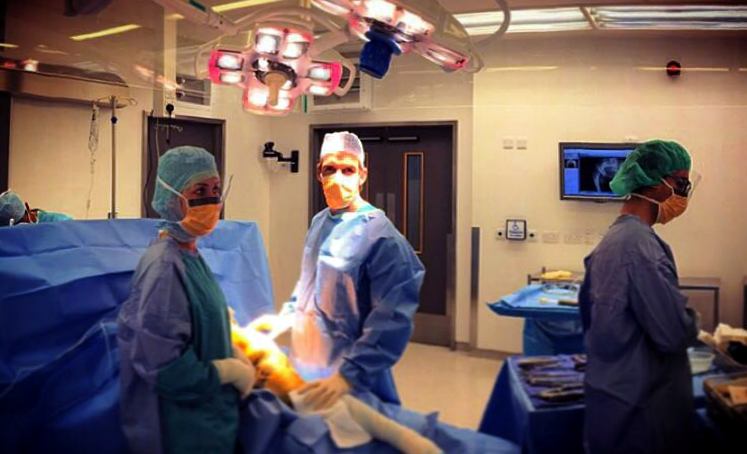Technology (whether some of us like it or not!) is all around us. The field of orthopaedics is no exception. Over the last number of years, methods of fixing fractures and dealing with joint problems have changed dramatically. Specifically, with regard to knee replacements, recent advances include the use of computer navigation to increase the accuracy that surgeons can perform the procedure.
The technology doesn’t actually perform the procedure and the same knee replacement is inserted, it just provides the operator with a lot more information so that they can adjust accordingly. Computer navigation uses special markers placed in the bone for example to tell the surgeon that a particular cut is 2 degrees off – almost akin to a spirit level! A knee replacement essentially involves a number of cuts to the end of the thigh bone (femur) and shin bone (tibia) onto which the new knee will be inserted. The precise angle of these cuts then determines how the leg will look and feel. The surgeon’s task is to achieve a straight leg that is well balanced. Balance refers to the stability of the knee and is determined by the ligaments surrounding the joint.
Many people have a belief that knee replacements do not function or last as well as hip replacements. These is little doubt that recovery after a knee replacement involves more rehabilitation than after a hip replacement. However, when we look at joint registries that assess the outcome of all replacements performed over the years, knee replacements last just as well as hip replacements. The UK registry for example (unfortunately the Irish National Joint registry is currently just being set up), tells us that 96% of knee replacements are still lasting after 10 years – exactly the same as the figure for hip replacements. Hopefully we can expect them to continue to last a lot longer – 15 even 20 years.
We are also performing more partial knee replacements that replace only the worn section of the joint. Whilst the main aim of any joint replacement is to treat pain, the function of the joint afterwards and ability of patients to get back doing the activities that they want to participate in is also of paramount importance.
For the moment, hip and knee replacements can’t be performed by your mobile phone but no doubt with a few more updates……


